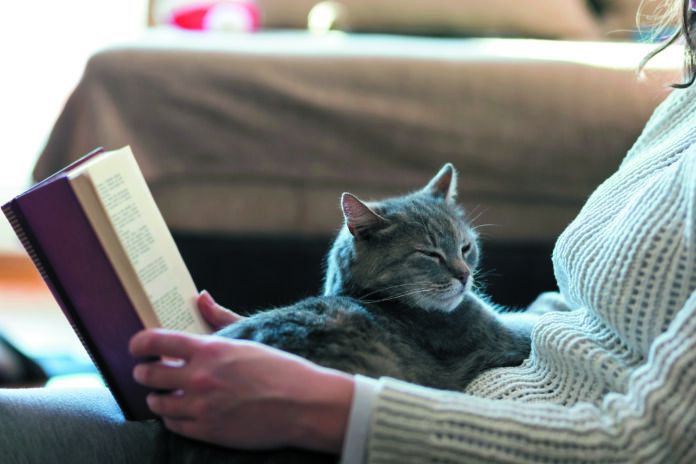Imagine having to avoid tripping over your cat because she’s frequently making tiny figure-8s around and between your legs. Or not being able to watch television in a relaxed manner because when you go to sit down, your feline pet drapes herself across your neck. Or, if you’ve closed a door for some privacy, she claws at it, perhaps even whin-
ing piteously.
To those whose cats are stereotypically aloof, such behavior might seem adorable, endearing even. But clinginess, if overdone, can become cloying—and dangerous, both for the person who might end up tripping over their pet and for the cat. A pet who becomes overly dependent may have a very hard time emotionally when their person is away from the houses, even just for several hours.
It’s called separation anxiety, and it can play out in a variety of ways: destructive behavior, excessive vocalizations, urination in inappropriate places, depression/apathy, aggressiveness, and agitation or anxiety. Fortunately, there are ways to help your pet feel bonded to you but not desperate for you.
What not to do
In the moment of a cat’s clinginess, when you’re on your last nerve because your pet won’t leave you alone, you may be tempted to give in to your annoyance by pushing her away, yelling at her, locking her by herself in a room, or perhaps spraying water at her. Better not to give into your exasperation that way. It amounts to punishing a sentient being for feeling anxious, which is not something she’s doing to you but, rather, an emotion she is trying to dispel by staying as close to you as possible. You will only make the problem worse by rebuffing her efforts to remain with you.
Also important to avoid: making a big fuss when you leave the house. We’re not saying you shouldn’t give your cat a bit of nice stroking on your way out the door. But if you act like going out is “the long goodbye,” you will be sending a message that every time you leave it is a big deal.
What to do
Show patience when your cat won’t leave you be. No matter how much you just want to relax by yourself, or no matter how busy you are, remain calm and gentle. That will send a clear message to your cat that she is important to you and that you like being with her, helping to tamp down on her anxious need to be right next to you.
Consider engaging in a short, intense burst of interaction. When the last thing you want to do is pay your cat some attention because she’s bothering you at an inopportune time, stop what you’re doing and play with her or groom her for a few minutes. Such indulgence, paradoxically, can help to foster independence. It’s redirection at its best.
Focus on behaviors you want to encourage rather than on those you want to discourage. If your cat happens to be napping or hanging out in another room or is on the far side of the room you’re in, go over and stroke her to let her know that you approve of her behavior and that you will go out of your way to make her feel good when she chooses to be on her own a little. Maybe see at those moments whether you can entice her to play with a toy. If, on the other hand, something like your cat’s vocalizations are distracting you, try not to react. It may take a while, but she’ll gradually get the message about what doesn’t work to get your attention as well as what does.
Design your cat’s spaces so she can be near you without being on top of you. She may most want to be with you when you’re engaged in an activity that excludes her. With that in mind, put a box for your cat to sit in right on your work desk. Or place a cat tree next to the couch where you like to watch television. Similarly, you can put a cat bed close to where you spend significant time engaged in something that precludes interacting with her. The closeness alone might be enough—with a scratch under her chin here and there.




